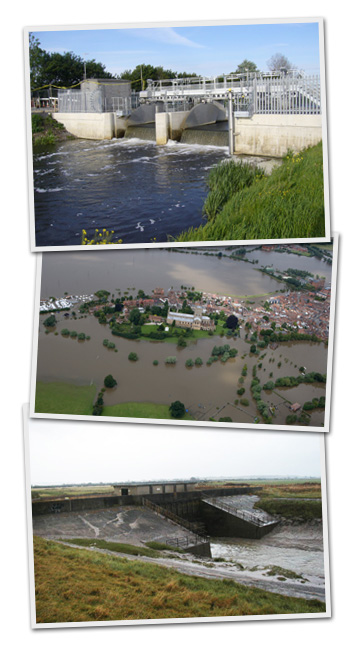
Water & Land Management
The North and Mid Somerset Catchment
 The North and Mid Somerset river catchment, including the Rivers Brue and Axe, drain from their sources in the Mendips in the east of the catchment. They flow in a westerly direction through low-lying coastal plain, before flowing out into the Severn Estuary through tidal sluices.
The North and Mid Somerset river catchment, including the Rivers Brue and Axe, drain from their sources in the Mendips in the east of the catchment. They flow in a westerly direction through low-lying coastal plain, before flowing out into the Severn Estuary through tidal sluices.
The overall catchment area is about 1,100 square kilometres. These are mainly rural catchments, with few urban areas. The main urban areas, mainly located on the coastal plain, include Weston-super-Mare, Burnham-on-Sea and Highbridge, Cheddar, Glastonbury and Street. The catchment has a population of around 275,000.
The underlying rock has a significant influence on the catchment’s response to rainfall, with high run-off from the impermeable uplands in the south east and waterlogging of the clay lowlands.
The rivers Brue and Axe flow through the Somerset Levels and Moors, where they are embanked and in some places perched above the surrounding floodplain. The surrounding ‘dry land’ is only kept this way through pumping and maintaining the embankments. Internal Drainage Boards and the Environment Agency have an important role in managing land drainage within these low-lying moors through a system of water level control structures (e.g. pumping stations, sluices, tidal flaps). In the Somerset Levels and Moors, flooding is caused by long duration storms or a series of storms when the embanked channels overflow. Floodwaters are then stored on the moors before it can be pumped towards the estuary. The capacity of these channels flowing towards the estuary can be significantly reduced by high tidal conditions.
The catchments contain a number of designated sites of national and international importance. A significant part of the low-lying Somerset Moors are designated Special Protection Areas (SPA) and a Ramsar site, which depend upon flooding.
The area is also rich in archaeological sites, some of which depend on waterlogged conditions for their preservation. Some of these are internationally important.
If you would like to know more about biodiversity and heritage click here.


